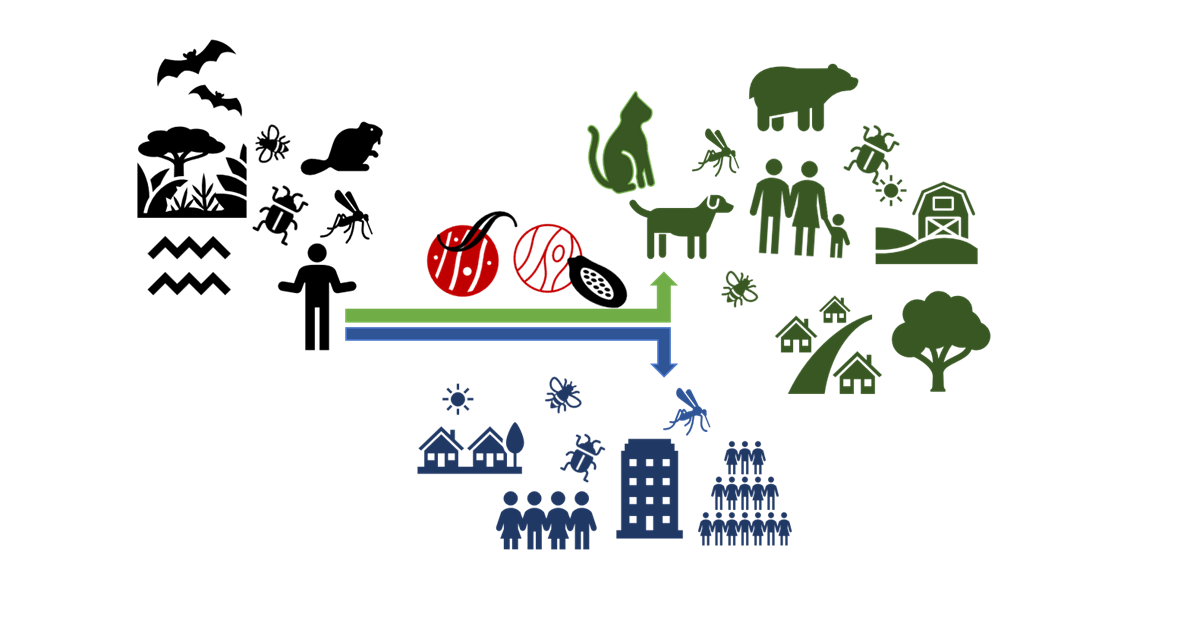- 3.3Impact Factor
- 6.8CiteScore
- 14 daysTime to First Decision
Epidemiology, Diagnosis and Clinical Management of Human Parasitic Infections
This special issue belongs to the section “Parasitic Pathogens“.
Special Issue Information
Dear Colleagues,
Anthropogenic movements result in modifications of the wild natural habitat, such as the destruction of forest areas, the introduction of domestic animals and the alteration of sanitation conditions. Global-warming-related changes can lead to the uncontrolled proliferation and dispersion of arthropod vectors of parasitic infectious diseases, such as malaria, Chagas disease and leishmaniasis. Others parasitic diseases associated with poor sanitation conditions include giardiasis, toxoplasmosis and diseases caused by helminths and flatworms. Considering the diversity of biomes, investigation into the eco-epidemiological and evolutionary relationships among parasites is critical for the detection, prevention and clinical management of parasitic infectious diseases.
Dr. Marcia Aparecida Speranca
Dr. Aline Diniz Cabral
Guest Editors
Manuscript Submission Information
Manuscripts should be submitted online at www.mdpi.com by registering and logging in to this website. Once you are registered, click here to go to the submission form. Manuscripts can be submitted until the deadline. All submissions that pass pre-check are peer-reviewed. Accepted papers will be published continuously in the journal (as soon as accepted) and will be listed together on the special issue website. Research articles, review articles as well as short communications are invited. For planned papers, a title and short abstract (about 250 words) can be sent to the Editorial Office for assessment.
Submitted manuscripts should not have been published previously, nor be under consideration for publication elsewhere (except conference proceedings papers). All manuscripts are thoroughly refereed through a single-blind peer-review process. A guide for authors and other relevant information for submission of manuscripts is available on the Instructions for Authors page. Pathogens is an international peer-reviewed open access monthly journal published by MDPI.
Please visit the Instructions for Authors page before submitting a manuscript. The Article Processing Charge (APC) for publication in this open access journal is 2200 CHF (Swiss Francs). Submitted papers should be well formatted and use good English. Authors may use MDPI's English editing service prior to publication or during author revisions.
Keywords
- parasitic infectious diseases
- eco-epidemiology
- diagnosis
- treatment
- clinical management
- prevention

Benefits of Publishing in a Special Issue
- Ease of navigation: Grouping papers by topic helps scholars navigate broad scope journals more efficiently.
- Greater discoverability: Special Issues support the reach and impact of scientific research. Articles in Special Issues are more discoverable and cited more frequently.
- Expansion of research network: Special Issues facilitate connections among authors, fostering scientific collaborations.
- External promotion: Articles in Special Issues are often promoted through the journal's social media, increasing their visibility.
- e-Book format: Special Issues with more than 10 articles can be published as dedicated e-books, ensuring wide and rapid dissemination.

